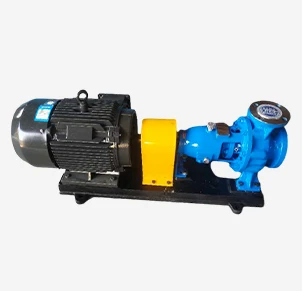English
- Afrikaans
- Albanian
- Amharic
- Arabic
- Armenian
- Azerbaijani
- Basque
- Belarusian
- Bengali
- Bosnian
- Bulgarian
- Catalan
- Cebuano
- Corsican
- Croatian
- Czech
- Danish
- Dutch
- English
- Esperanto
- Estonian
- Finnish
- French
- Frisian
- Galician
- Georgian
- German
- Greek
- Gujarati
- Haitian Creole
- hausa
- hawaiian
- Hebrew
- Hindi
- Miao
- Hungarian
- Icelandic
- igbo
- Indonesian
- irish
- Italian
- Japanese
- Javanese
- Kannada
- kazakh
- Khmer
- Rwandese
- Korean
- Kurdish
- Kyrgyz
- Lao
- Latin
- Latvian
- Lithuanian
- Luxembourgish
- Macedonian
- Malgashi
- Malay
- Malayalam
- Maltese
- Maori
- Marathi
- Mongolian
- Myanmar
- Nepali
- Norwegian
- Norwegian
- Occitan
- Pashto
- Persian
- Polish
- Portuguese
- Punjabi
- Romanian
- Russian
- Samoan
- Scottish Gaelic
- Serbian
- Sesotho
- Shona
- Sindhi
- Sinhala
- Slovak
- Slovenian
- Somali
- Spanish
- Sundanese
- Swahili
- Swedish
- Tagalog
- Tajik
- Tamil
- Tatar
- Telugu
- Thai
- Turkish
- Turkmen
- Ukrainian
- Urdu
- Uighur
- Uzbek
- Vietnamese
- Welsh
- Bantu
- Yiddish
- Yoruba
- Zulu
Telephone: +86 13120555503
Email: frank@cypump.com
Nov . 10, 2024 08:14 Back to list
Durable Solutions for Rubber Slurry Pump Components and Accessories
Understanding Rubber Slurry Pump Parts A Comprehensive Overview
Rubber slurry pumps are essential components in various industries, particularly in mining, mineral processing, and wastewater treatment. They are specifically designed to handle abrasive slurries, which consist of liquid mixed with solid particles. The selection of appropriate pump parts is crucial for ensuring efficient performance, longevity, and reliability. This article will delve into the vital components of rubber slurry pumps, their functions, and maintenance tips.
Key Components of Rubber Slurry Pumps
1. Pump Casing The pump casing is the outer shell of the slurry pump. Typically made from high-quality rubber, it serves several functions, including protecting internal components, providing structural integrity, and housing the impeller. Rubber casings are preferred for their resistance to abrasiveness, corrosion, and wear, which enhances the pump's overall life span.
2. Impeller The impeller is a crucial component that converts the motor's energy into kinetic energy of the slurry. In rubber slurry pumps, impellers are often made from high-chrome alloys or rubber materials to withstand the abrasiveness of the slurry. The design of the impeller significantly influences the pump's efficiency, flow rate, and ability to handle solids.
3. Throat Bushing This part is located at the pump's suction side and is critical for minimizing the wear caused by abrasive materials. Made from a wear-resistant rubber material, the throat bushing provides a tight fit between the impeller and the pump casing. Its primary function is to reduce the leakage of slurry back into the suction side, thereby maintaining efficiency and pump performance.
4. Suction and Discharge Nozzles The nozzles facilitate the entry and exit of the slurry. They must be robust and capable of handling high flow rates and pressures associated with slurry transport. The design of these nozzles can impact the overall efficiency of the pump and influence the hydraulic performance.
5. Bearing Assembly Bearings support the rotating shaft of the pump, ensuring smooth operation and alignment. The bearing assembly is typically designed to be durable, capable of withstanding the heavy loads and vibrations typical of slurry applications. Using rubber bearings can also reduce noise and enhance vibration dampening.
6. Rotor and Shaft The rotor is attached to the shaft, which connects to the motor. The rotor's design and material selection are critical since they need to accommodate heavy pumping loads without bending or breaking. A well-designed rotor and shaft system facilitates continuous operation and minimizes downtime due to mechanical failures.
rubber slurry pump parts

Maintenance Tips for Rubber Slurry Pumps
To ensure optimal performance and extend the lifespan of rubber slurry pumps, regular maintenance is imperative. Here are some essential maintenance tips
1. Regular Inspection Frequently inspect the pump components, including the casing, impeller, and wear parts for signs of wear or damage. Early detection of issues can prevent costly repairs and unplanned downtime.
2. Correct Lubrication Ensure that bearings are adequately lubricated to minimize friction and wear. Following the manufacturer's recommendations on lubrication intervals and types of lubricants is essential.
3. Monitoring Performance Keep an eye on vital performance indicators such as flow rate, pressure, and energy consumption. Any significant variations may indicate a problem that requires immediate attention.
4. Scheduled Replacements Plan for regular replacement of wear parts like the impeller and throat bushing based on operational experience and manufacturer guidelines to avoid unexpected failures.
5. Cleaning Regularly clean the pump's exterior and ensure that no debris builds up around the suction and discharge areas, which can impede performance.
Conclusion
Rubber slurry pumps are crucial to many industrial processes where the movement of abrasive slurries is necessary. Understanding the various parts that make up a rubber slurry pump and their functions can help operators maintain performance and extend the lifespan of these essential pieces of equipment. Proper care and maintenance practices are not just beneficial for performance but also contribute to cost savings in the long run by minimizing repairs and replacements. Whether in mining, construction, or wastewater management, the effective operation of rubber slurry pumps is vital, and knowledge of their parts is key to achieving that success.
-
ISG Series Vertical Pipeline Pump - Chi Yuan Pumps Co., LTD.|Advanced Hydraulic Design&Energy-Efficient Solutions
NewsJul.30,2025
-
ISG Series Vertical Pipeline Pump - Chi Yuan Pumps Co., LTD.
NewsJul.30,2025
-
ISG Series Vertical Pipeline Pump - Chi Yuan Pumps Co., LTD.|energy-efficient fluid handling&industrial durability
NewsJul.30,2025
-
ISG Series Vertical Pipeline Pump - Chi Yuan Pumps | Advanced Engineering&Industrial Efficiency
NewsJul.30,2025
-
ISG Series Pipeline Pump - Chi Yuan Pumps | High Efficiency, Energy Saving
NewsJul.30,2025
-
ISG Series Vertical Pipeline Pump-Chi Yuan Pumps|High Efficiency&Reliable Performance
NewsJul.29,2025










